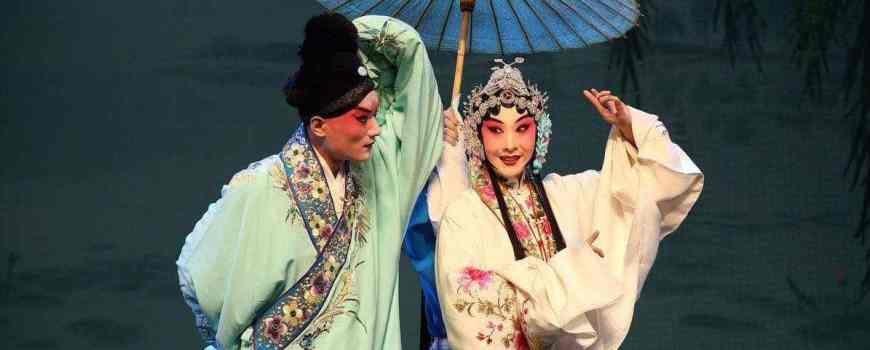Chinese opera 中国戏剧 (zhōng guó xì jù) has existed for hundreds of years, and has its own conventions and individual style. Whilst there are various different types of Chinese opera, in the modern-day, Beijing or Peking Opera is the most common type of opera and is said to be an amalgamation of the different opera styles in China.
Chinese operas are usually based on historical or mythical stories from the past and are a dramatic combination of music, singing, martial arts, and acrobatics.
For foreigners, and even contemporary Chinese people, the meaning behind a Chinese opera often goes misunderstood, however, many Jingju actors often have years of training before being allowed to perform on stage.
Peking Opera 京剧 (jīng jù) became popular at the end of the Qing Dynasty when the general public also became interested in opera. In the early 20th century, Peking Opera first went abroad to Japan, the United States, and Russia.
Being part of an opera troupe 戏班子 (xì bān zi) is often something that is passed down through a family, so if your father and grandfather were involved in opera, then you were expected to join also. Training for children started at a young age and was often brutal, studying gymnastics, acrobatics, martial arts, singing and acting techniques from 5 am every morning.
Peking Opera Conventions
Every movement, gesture, and glance has symbolic meaning in Peking opera and is based on imitation or mime 模仿 (mó fǎng). For example, an actor walking around in a circle suggests a long journey.
Peking Opera Costume Conventions
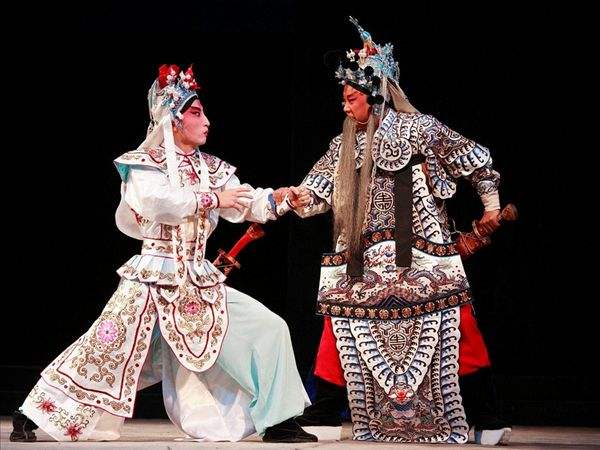
Originally, Peking Opera costumes were divided into the ‘Upper and Lower Five Colours’ 上下五色 (shàng xià wǔ sè). The Top Five Colours 上五色 (shàng wǔ sè) were red, yellow, black, green, and white whilst the Bottom Five 下五色 (xià wǔ sè) were blue, pink, purple, 秋香 (qiū xiāng) colors between grass green and olive green and 皎月 (jiǎo yuè) colors between river blue and blue.
So for example, each costume color is created with a specific meaning in mind that the audience, having knowledge of these conventions will understand immediately:
- Emperors and imperial family members wear bright yellow
- High ranking officials or intrepid military officers wear purple
- Virtuous or valiant people wear red
- Low-ranking officials or young men wear blue, however, there are different styles and color range to suggest position.
- Young handsome officers or generals or lovers wear white
- Young men wore pink
- Older characters wear greens (grass green to olive-green shades)
- Rude and reckless characters wear black
- Loyal and brave roles were a green costume
Peking Opera Stage and Prop Conventions
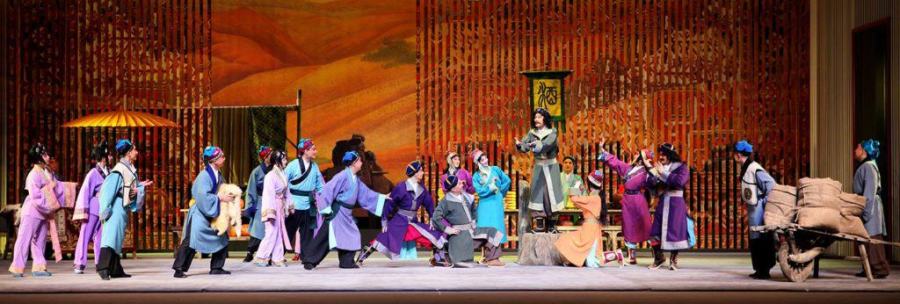
Upon entering the stage from the east or west, actors will immediately walk to the ‘center north’ of the stage. A table and chair are the most common prop on the stage, although sometimes there will be a background to suggest a location. Furthermore, additional props may be used to indicate other objects such as a whip to suggest the presence of a horse.
Peking Opera Makeup Conventions
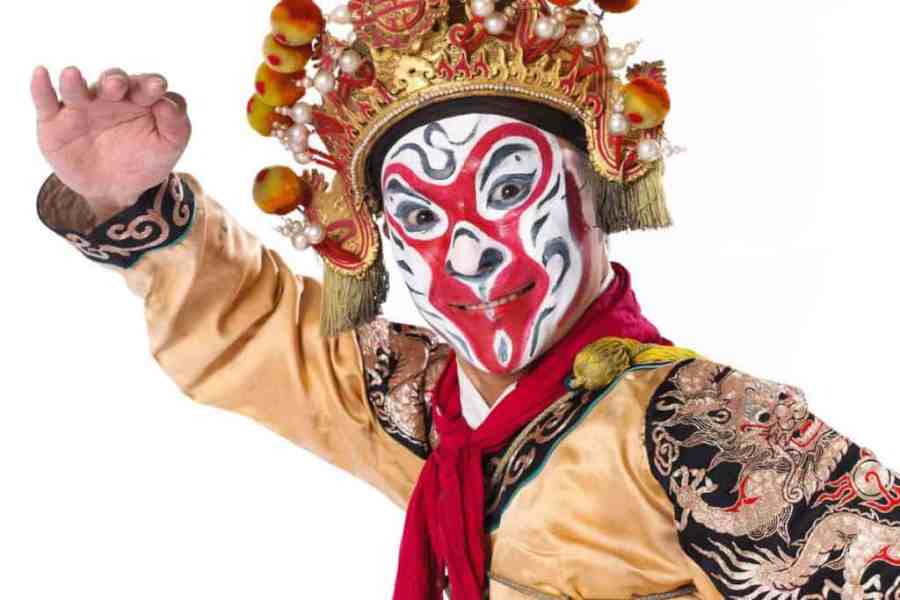
Whilst other forms of Opera have masks to cover the face, Peking opera actors wear makeup. The method of wearing makeup to suggest a character‘s personality is known as 脸谱 (liǎn pǔ) or ‘the picture of hearts’ because the audience should instantly know what kind of person the character is. For this reason, the makeup worn by each character takes years of mastery by the actor playing the role. It is necessary for him to have a deep understanding of his character in order to make up his face.
Although in some cases, characters may just have one color, a dot, or a line of makeup, some characters have intricately painted wings of butterflies, swallows, and bats on their eyes and cheeks. Similar to Peking opera costumes, the color of makeup is extremely important: red symbolizes loyalty, black for honesty, and white for cunning.
Music and Singing
Most of the language used in Beijing opera is an old form of Mandarin that originates from Zhongyuan Mandarin 中原 (zhōng yuán).
There are two different styles of music in Peking opera:
Xipi is sprightly and lively and is often paired with lyrics, narration, and scenic parts of the opera. Erhuang is slower and deep and is often used to express melancholia and distressing situations.
However, there is very little difference between these musical styles, except for Erhuang being in a slightly lower tone. These use the same instruments and techniques including ‘manban’ 慢板 (màn bǎn), which is a mournful song commonly played by a 老生 (lǎo shēng) Laosheng.
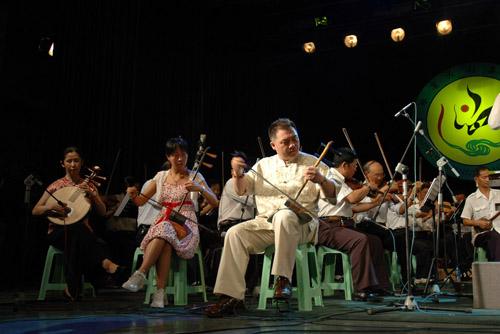
The musical instruments are often set up on a table in front of the stage so that the orchestra is in full view of the audience. A performance will usually begin with a flute accompanying singing. Throughout the Peking opera, drummers are the main musicians who accompany acrobats, singers, and martial artists.
Instruments
The orchestra tends to be a small group of no more than 8 people playing the following instruments:
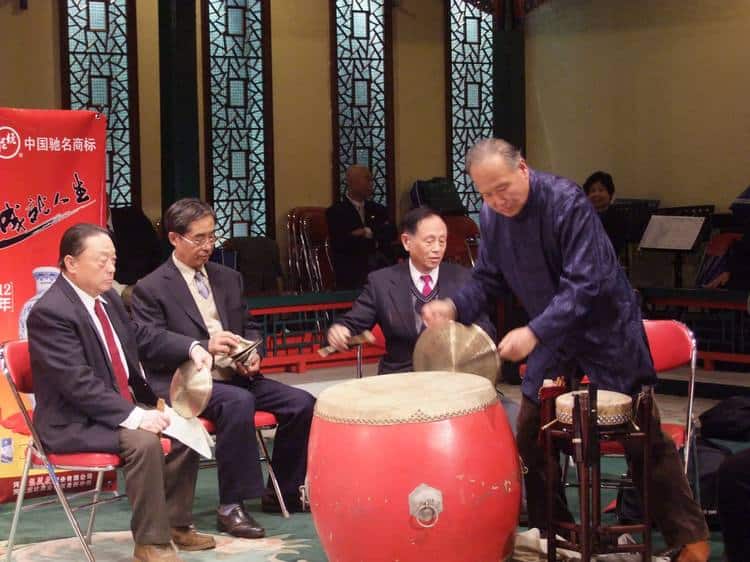
The performance often begins with a gong known as 大锣 (dà luó) and a smaller gong 小锣 (xiǎo luó). There is also sometimes a single-skinned drum 单皮鼓 (dān pí gǔ) or kettle drum 堂鼓 (táng gǔ).
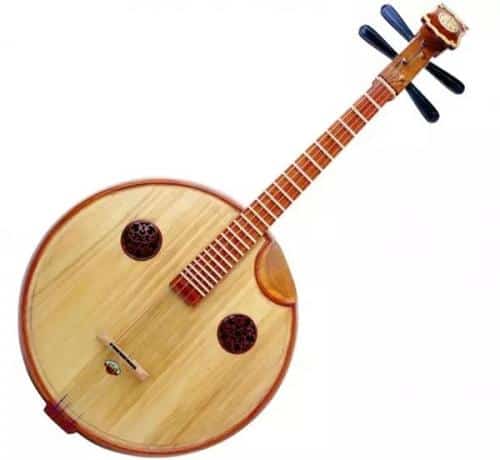
A flute known as the 笛子 (dí zi) would be played as an accompaniment to singing, as well as a 月琴 (yuè qín), a stringed instrument and the more commonly known, 京胡 (jīng hú), a 2 stringed fiddle.
Peking Opera Roles
There are very specific characters in Peking Opera, that in the past would have been played by men, regardless of if the character was male or not. The main four roles are Sheng, Dan, Chou, and Jing 生旦丑净 (shēng dàn chǒu jìng). These roles were further separated depending on whether the character is good or evil, handsome or ugly.
The Sheng 生 (shēng) is the male character and is divided into four specific roles:
Laosheng 老生 (lǎo shēng)
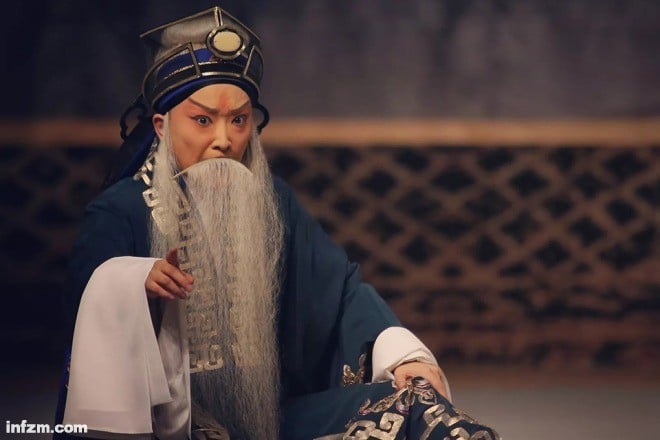
The Laosheng character is often gentle with good manners and has a black or white beard. They would often wear a black hat of various shapes depending on the character’s status as well as a uniform-type costume.
Tan Xin Pei 谭鑫培 (tán xīn péi) was one of the most famous Laosheng actors in Peking Opera history.
Hongsheng 红生 (hóng shēng)
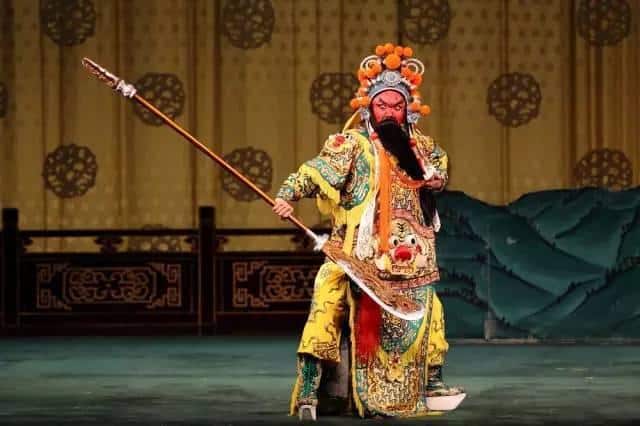
Hongsheng is a version of the Laosheng but with a red face.
Xiaosheng 小生 (xiǎo shēng)
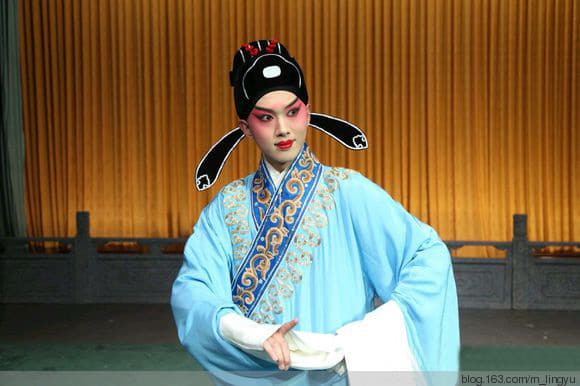
The Xiaosheng was a young handsome man who sings with a high-pitched voice. Depending on his position in society, his costume might be elaborate or plain, and would wear a hat with long pheasant feathers.
Wusheng 武生 (wǔ shēng)
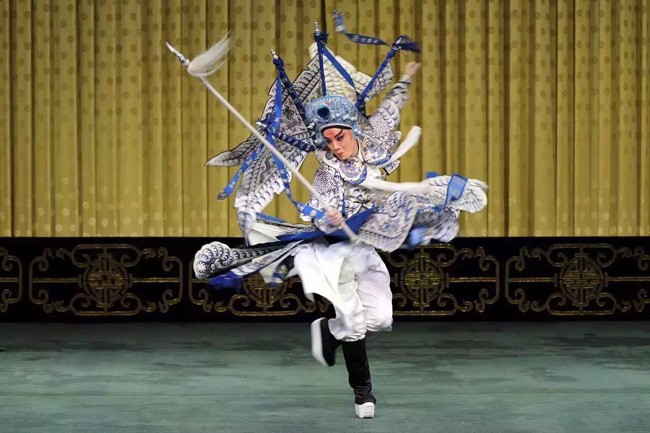
The Wusheng is a martial arts master and often performs with spears and swords. Changkao Wusheng 长靠武生 (cháng kào wǔ shēng) wears a helmet, and boots and uses a long-handled weapon, whereas Duanda Wusheng 短打武生 (duǎn dǎ wǔ shēng) wear short, simple clothes perform with a short-handled weapon.
The Dan 旦 (dàn) is a female character of which there are six more specific roles:
Zhengdan 正旦 (zhèng dàn) (Qingyi 青衣 (qīng yī))
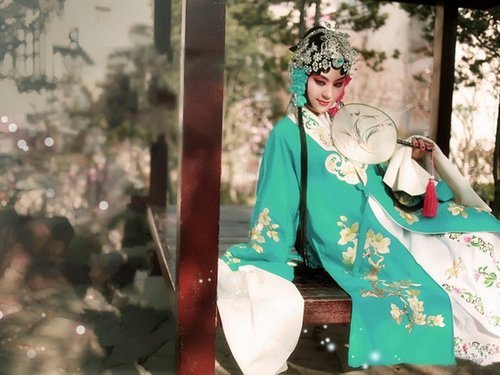
The Qingyi is the central ‘dan’ character of Beijing Opera and is proud, honest and an extremely important role. Their costumes were often yellow, and sing with a pure high-pitched voice.
Huadan 花旦 (huā dàn)
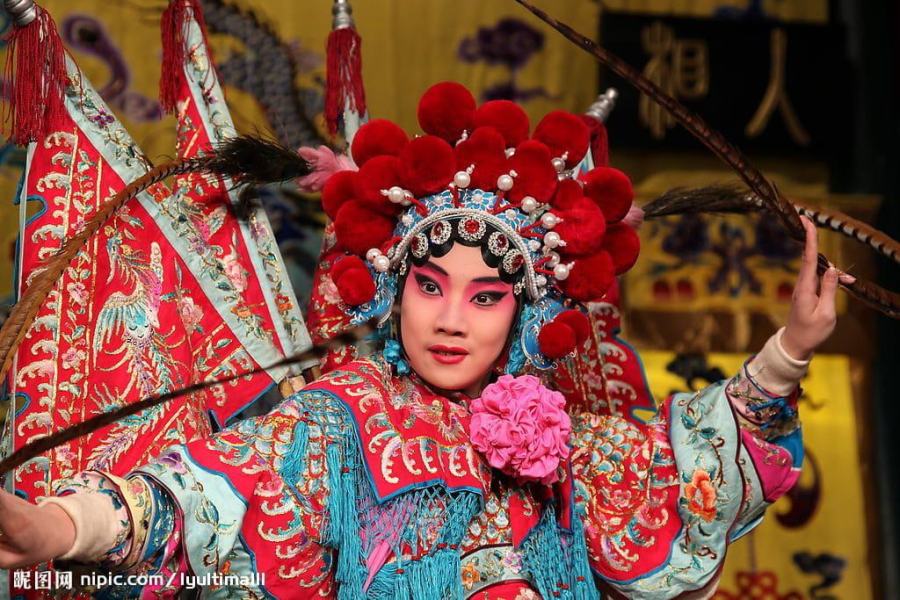
Huadan characters are young flirtatious, unmarried women with coy expressions and flitting movements on stage. Her costume is made of a brightly colored jacket and trousers.
Mei Lanfang 梅兰芳 (méi lán fāng) created a new Dan character which was a combination of the Qingyi and Huadan. You can learn more about Mei Lanfang in our article, Mei Lan Fang: The King of Peking Opera.
Guimendan 闺门旦 (guī mén dàn)
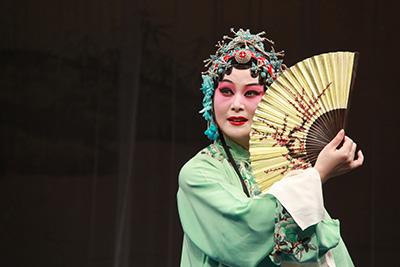
The Guimendan is a young, immature girl. She misbehaves in a mischievous manner but has a shy manner.
Daomadan 刀马旦 (dāo mǎ dàn)
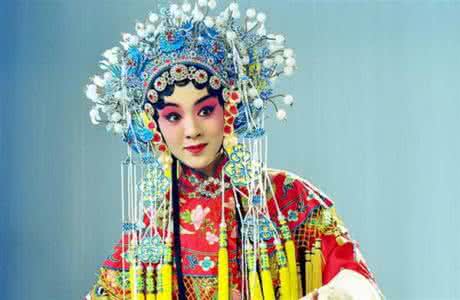
The Daomadan is a warrior female and performs in a strong manner. She wears a military headdress and weapons.
Laodan 老旦 (lǎo dàn)
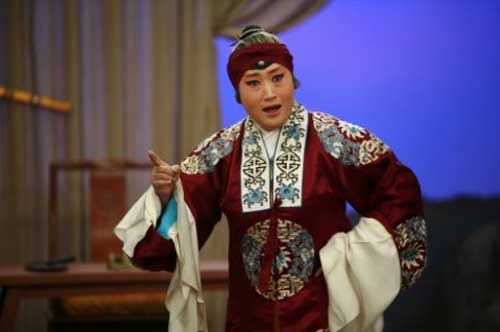
A Laodan is an old woman. She does not wear any makeup, and her costume is often made of somber colors and style.
Wudan 武旦 (wǔ dàn)
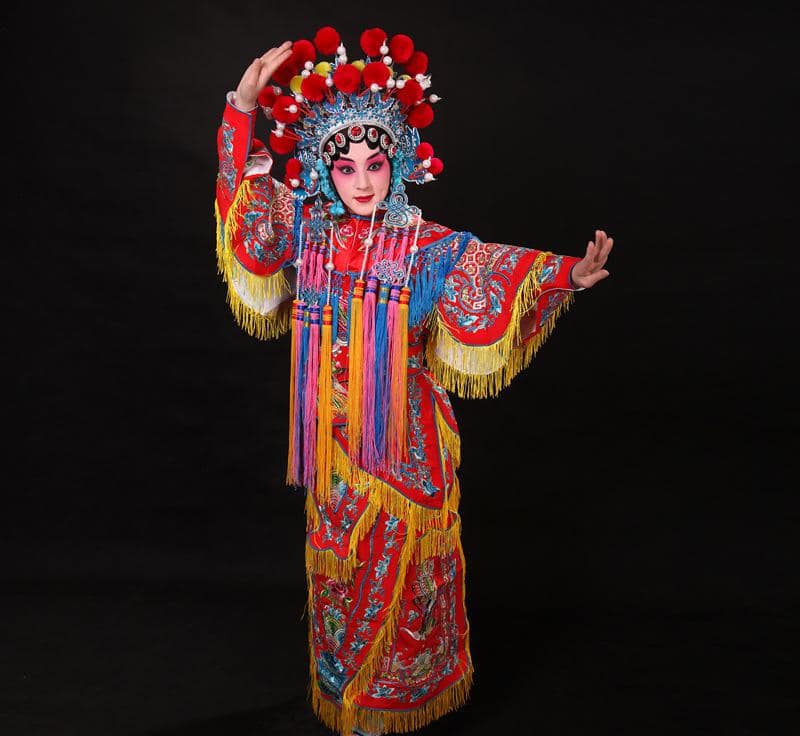
The Wudan is an acrobatic character who wears a simple costume.
Jing 净 (jìng)
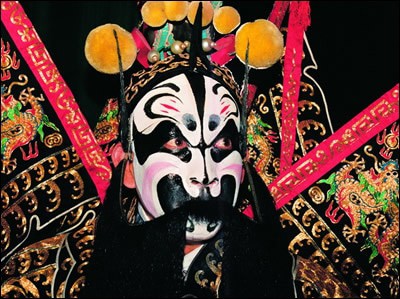
The Jing is a prominent character with a painted face of a high social class. He has a deep voice and a confident manner that can either be a good or bad role. The colors on his face would dictate what kind of character he was. Red for good, black for brave, white for cunning, yellow for brutal, and blue for wild.
Chou 丑 (chǒu)
The Chou is a comedy character and comes in two types:

The Wenchou 文丑 (wén chǒu) is often a dandy, jailer, bartender, or a bellman.

The Wuchou 武丑 (wǔ chǒu) is usually a vigilant and witty character, who is extremely good at Kung Fu. The character would be comparable to Robin Hood, who robs the rich to give to the poor.
Share your experiences with Peking Opera with us below!
